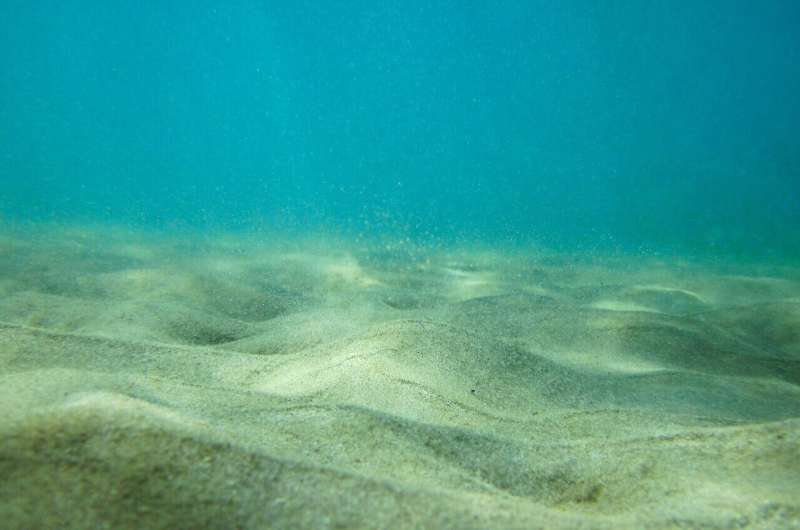Expansion of seafloor anoxia during Ordovician cooling caused concurrent decline in biodiversity

The Ordovician is a critical transition for the coevolution of life and environments, as it witnessed stepwise rise of atmospheric O2 and secular decline of CO2, as well as the blooming of marine fauna and the colonization of early land plants.
The rapid increase in diversity and complexity of ecosystem was defined as "Great Ordovician Biodiversification Event" (GOBE). However, there was a turning point following the peak of GOBE.
Recently, a joint research team led by Dr. Zhang Junpeng and Prof. Zhang Yuandong from the Nanjing Institute of Geology and Paleontology of the Chinese Academy of Sciences (NIGPAS), Prof. Timothy W. Lyons from University of California (Riverside) and Prof. Thomas J. Algeo from University of Cincinnati has proposed that remarkable expansion of seafloor anoxia during the climatic cooling accounted for such profound biotic change.
The findings were published in Earth and Planetary Science Letters on Oct. 12.
The researchers investigated two Mid-Ordovician shale-dominated successions from the intra-shelf basin (Zhenjin section) and slope (Anye-1 core) settings of the Yangtze Sea in South China, with a novel combination of iron speciation, trace metals, bulk δ15N and pyrite δ34S. And, for the first time, δ98Mo profile was produced for the Mid-Ordovician black shale in South China.
The Anye-1 core yielded a negative shift in δ15Nbulk upwards and low values ~ 1-2‰ (same for Zhenjin section) across the Darriwilian to Sandbian boundary, implying a gradual dominance of microbial N-fixation in the oceans. That consisted with the moderate-high primary productivity and dysoxic-anoxic bottom-water conditions. While the iron proxy and δ34S revealed a progressive evolution of bottom-water redox conditions from oxic, ferruginous to euxinic in the slope of Yangtze Sea. Similarly, the co-variation of enriched Mo and U indicated predominantly euxinic bottom-waters for the late Darriwilian to early Sandbian.
Moreover, moderate Mo/TOC (~18 ppm/%) suggested semi-restricted watermass conditions for the Yangtze Sea. Thus, if the euxinic sediments of Ningkuo shale captured global seawater compositions, modeling reconstructed δ98MoSW was ~0.8-1.1‰, which is close to previous estimates for Ordovician seawater (1.1-1.3‰) and suggests that the oceans were less oxygenated, at least for Mid-Late Ordovician, than previously assumed.
Notably, equivalent black shales of wide distribution on other continents include Saergan Formation in Tarim, Wulalike Formation in North China, Roadriver Group in Northwestern Laurentia and Alum Shale in Baltica. Those shales formed in the low-latitude continental basins that were easily influenced by upwelling. During the climatic cooling, high-latitude deep and cold currents would have gotten strengthened and brought more nutrients into low-latitude shelves via upwelling. Under such scenario, more efficient nutrient cycling would stimulate primary production in the ocean surface and export massive organic carbon downwards to the seafloor, where the organic matter would get decomposed largely consuming dissolved oxygen and thus cause bottom-water anoxia.
In pace with those environmental changes, the biodiversity yields a ~50% decline of species. Although the timing for the peak of GOBE is different for several continents, the overturn is considered to have appeared before the late Darriwilian.
Therefore, climatic cooling and concurrent expansion of seafloor anoxia can be proposed as a fundamental trigger for the biotic crisis, which provides important evidence for the biotic overturn following the peak of GOBE and valuable implications for the link between icehouse ages and biotic extinctions in Earth history.
More information: Junpeng Zhang et al, Progressive expansion of seafloor anoxia in the Middle to Late Ordovician Yangtze Sea: Implications for concurrent decline of invertebrate diversity, Earth and Planetary Science Letters (2022). DOI: 10.1016/j.epsl.2022.117858
Journal information: Earth and Planetary Science Letters
Provided by Chinese Academy of Sciences




















